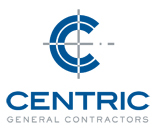It is not a secret that the Napa Valley is an attraction for wine lovers from around the world. While the region is a premier destination for international travelers, the area’s businesses, government agencies, and residents are steadfast in their commitment to their local communities. One of the areas of particular importance is maintaining the integrity of the Valley’s picturesque environment and lush landscape.

Photograph: Chappellet Winery
As Napa Valley builders, we are additionally concerned with maintaining, upholding, and innovating design and construction practices that result in the most efficient, healthy wineries that will benefit our community, the environment, and our client’s bottom line. This post discusses the key elements for planning and building a sustainable winery that serves both the local communities and Napa Valley visitors.
Creating a Sense of Place: Sustainable winery plans build strong communities. These plans should create a sense of place offering visitor-gathering places, and providing paths for pedestrians. The best sustainable plans invite community involvement where members play a critical role in the local winery development starting at the planning phase and continued through its operational lifetime.
Winery Site Planning: Planning a sustainable, community-friendly winery requires a thoughtful approach. This approach begins with smart site planning. Together with your design and construction team, observe the site’s natural features. Identify the areas that may provide shade for your winery facility and naturally control storm water runoff. Your winery development team should collaboratively work to reduce the footprint of the winery facility by creating a more compact building and associated parking areas. In addition, it is essential to take care of the trees and maintain soil conditions during construction activities.
Considerations for the Winery’s Indoor Air Quality: We can all agree the rich woody smell of the Napa Valley during the crush is intoxicating. The appreciation and respect for the art and science of winemaking should also be conveyed through an attentiveness toward indoor winery air quality. It is mission critical to ensure the health of resident winery personnel, local residents, and visitors as well as secure the winemaking process.
A high quality indoor winery environment requires careful planning and coordination for design and construction. It is important to make wise non-toxic material and finish choices and carefully coordinate associated construction activities. Depending on the intended use of the winery facility, a shared understanding for the desired level of ventilation, moisture control, temperature control, and energy efficiency needs to be discovered early on in the planning phase. In addition, the facility’s maintenance requirements throughout its lifetime need to be considered and factored into winery design.
Friendly Building Materials: Today’s world is more environmentally conscious. Fortunately, there is a wide range of friendly, high quality building products and materials that either reduce or eliminate indoor air quality concerns. It is easy to avoid toxic materials and, also, identify areas to reduce waste with the use of recycled-content and pre-fabricated products. Work with your design and construction team to establish criteria material and waste goals, standards, and certifications.
The Energy Efficient Winery: With energy modeling software, you can plan for energy efficiency early on in the design phase. Select a team of professionals who can help you design a plan that takes advantage of the sun and wind to provide warmth, lighting and even cool your winery facility in a more effective, efficient, and affordable manner. The use of modeling software assists with developing a high performance winery building envelope and insulation that can be supported with the selection of more efficient HVAC systems, equipment, and lighting.
Winery Water Resources: Your winery’s design and construction team should carefully plan for water and wastewater treatment reclamation. Your plan should include conservation of freshwater resources through water-efficient equipment and plumbing installation, efficient irrigation, and putting rainwater and greywater to use. Where appropriate, identify areas and/or solutions for soaking up more stormwater runoff by replacing asphalt with porous pavement and potentially consider rain gardens and green roofs.
Winery Waste Management: A winery design that incorporates durable materials will avoid future waste. Develop a waste management plan and create goals for waste reduction, material reuse, and recycling to cut costs and improve the building’s quality.
Commissioning to Launch Winery Operations: When winery construction is complete, every owner expects the systems to be running and ready for business. The commissioning effort is the process of methodically evaluating and fine-tuning winery facility systems to function together as designed. A general contractor or commissioning agent can work together with your system/equipment vendors to consult during design, test during construction, and train facility managers and maintenance staff.
There are many areas consider when planning your sustainable winery. Taking the time to properly address your sustainability goals with real building solutions will not only reduce the costs of operation throughout your winery’s lifetime but, also, serve the community for future generations.
